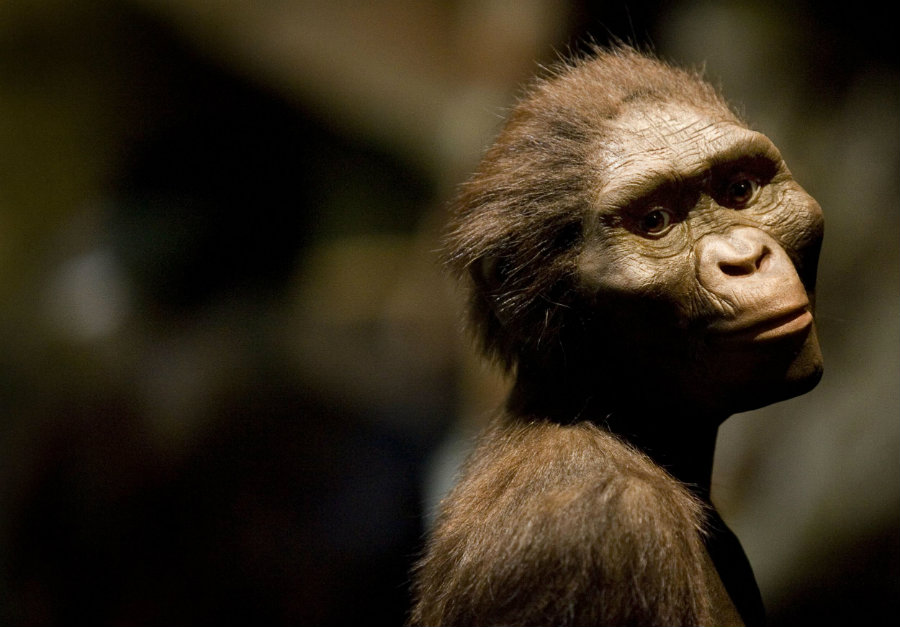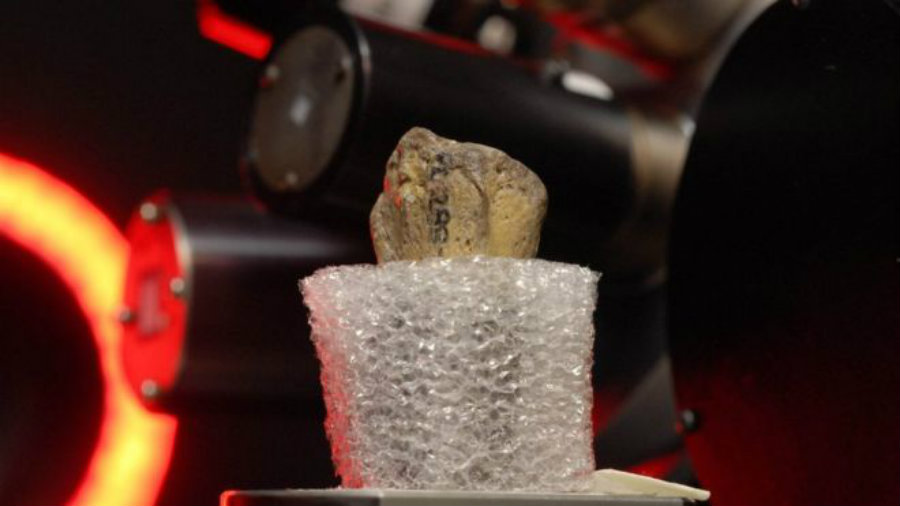Researchers from the University of Texas at Austin claim they have figured out the scenario that put an end to the life of Lucy, our most famous hominin ancestor. A fall from a tree after she tried to escape her many predators is the most plausible cause of her death about 3.18 million years ago, according to the authors of a study published Monday in Nature Communications.
Forty percent of Lucy’s skeleton was discovered in 1974 in Ethiopia, where the valuable pieces of this member of the species Australopithecus afarensis were usually kept. In 2008, her skeleton was taken to the United States for a museum tour and the research team had the opportunity to borrow Lucy for ten days.

They were thrilled to study one of the most complete hominin fossils ever found and scanned her non-stop with the High-Resolution X-ray Computed Tomography Facility (UTCT) that belongs to the UT Jackson School of Geosciences.
Designed to scan through very solid materials, this machine allowed the researchers to perform X-ray scanning 24/7 for ten days. Lead author John Kappelman, who teaches anthropology and geological sciences at UT Austin told The Washington Post that they were exhausted afterward and that he was as happy to see Lucy go as he was to see her come.
The scientists claim that their research revealed a pattern of particular fractures indicating that Lucy died after a fall from great heights. They spent the next eight years meticulously analyzing the 35,000 digital slices they were able to get from the scans. Kappelman said that he and his colleagues saw the distinctive fractures come to light by looking at the scans and the way Lucy’s skeleton was built.
Bones tend to break by natural causes over time after death, but Kappelman explained that Lucy’s bones have signs of fractures that are more common in living bone, as reported by National Geographic. He said that fractures postmortem occurs across the bone, but this skeleton’s bones had one side broken while the other remained intact.
Moreover, the scientists observed that minuscule bone pieces that splintered during the fractured remained lodged in the bone cracks, according to NatGeo. Kappelman argues that this evidence clearly indicates that Lucy’s living tissue suffered from those fractures because otherwise, breaks would have dispersed the small pieces on the ground nearby. The research team determined that the injuries resulted from a fatal traumatic event given that they did not find any signs of healing.
By paying close attention to distinctive compression fractures Lucy has on her right shoulder, the scientists thought that they occurred as Lucy extended her arms as she plummeted to the ground.
“I showed the evidence to an orthopedic surgeon, who immediately said it is a fracture caused by a fall from considerable height—there was no question at all,” said Kappelman, as NatGeo reported. “I have now had nine surgeons look at this who all agree.”
Picturing the deadly fall
The team of researchers meticulously studied fractures in the rest of the famous skeleton by creating digital 3D models to recreate specific components. They then observed a cohesive pattern in Lucy’s ankle, knee, shoulders, and wrist and came to the conclusion that they were points of a fall from a considerable height that would inevitably result in a deadly event.
Based on their knowledge of fossilized mammals and geology, the scientists believe that Lucy’s environment had been grass-covered woodland on a flat floodplain with many large trees suitable to provide her shelter from predators and facilitate the accident that would put an end to her life.

Because Lucy was a small, light mammal, a fall from a significant height would provide the force necessary to break her bones and kill her. She was about three and a half feet tall and weighed around 60 pounds (27 kilograms).
By looking at previous researches of chimpanzee nesting patterns, Kappelman, and his team showed that Lucy would likely have climbed the human equivalent to ascending a four to five story building. For her, it was around 14 meters out of predators’ way.
The researchers calculated that a fall from such a significant height could provide speeds exceeding 37mph (60Kmph). Combined with Lucy’s light weight, the fall would result in a fatal event.
The research team have “come up with what strikes me as the most plausible explanation for the breakage—mainly a fall from considerable height onto a very solid surface,” expressed Harvard University’s paleoanthropologist David Pilbeam, as quoted by NatGeo.
A just-so story?
The first study to figure out the cause of Lucy’s death has provoked controversy. Opponents still unconvinced argue that the apparent fractures involved in this study formed long after the hominin died as a consequence of geological forces that took part in the process of fossilization, as explained by Donald Johanson, a paleoanthropologist at Arizona State University, NatGeo reported.
Johanson noted that the type of breakage involved in the research is similar to others found on nearly 100 percent of other fossils found at Hadar, Ethiopia, including bones from elephants, rhinos, and monkeys.
Credited with discovering and naming Lucy, he affirmed these findings are unprovable and called the research a “just-so story.”
For his part, a paleoanthropologist and professor of Integrative Biology at the University of California, Berkeley, told NatGeo that Kappelman and his team failed to take into account other possible explanations. Timothy White said that the authors apparently focused only on the bone damage that could be explained by an “imagined fall.” He also pointed out that the research team ignored many other cracks on Lucy and similar fossils.
Source: National Geographic
